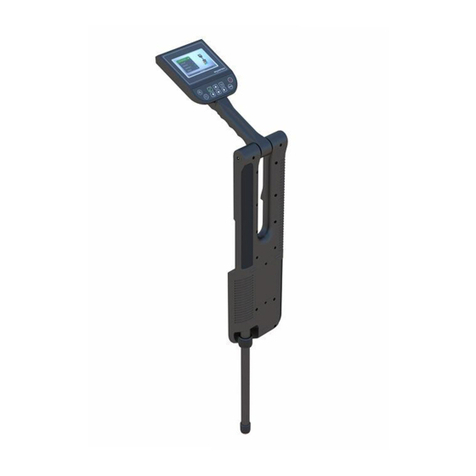
EN 8
Before the measurement begins, you should have information about what you are looking
for (gap, water, or metal) and the area you are scanning over. Errors that you will make in
the measurements will cause you to get different graphics. Please read carefully the
following articles to avoid making mistakes and get accurate data in your measurements;
-You should have information about the area being searched. You should take into
account the history of the area being searched, such as the structure of the soil.
-If there is any energy line in the area being searched, this will cause you to be in the
wrong regarding the data. You should search at least 50 meters away from the elements
that will affect your searches, such as power lines.
-When an unknown area is being searched, it is usually necessary to make a wide
measurement. For example; search must be conducted in 20 signals and 20 rows.
-If you are looking for a large object (grave, room and large objects); you can
increase the signal pulse spacing (such as 50 cm between each signal). If you are looking
for small objects, you should keep the signal pulse intervals more frequently (such as 20
cm, 30 cm).
-Performing your measurements in the northern and southern axis provides you
with healthier data. You should pay attention to this situation whenever possible.
-That a buried object has stayed underground for a long time means that it creates a
bigger magnetic field and can be detected more easily.
-You should check by doing the same search at least twice. The extra measurements
you make will help you to eliminate minerals and correct mistakes, if any.
-In measurements taken, the object or gap data should be in the middle of the
graph. If the gap data is at the edges in the graphic, you should measure it again by
centering this data.
-During the search, you should check the battery and charge status of your product.
You should search with a fully charged product. A low battery level is one of the factors
that affect your measurements.
-As you can see in the graphic below, you have to start from the beginning (1) and
finish at the end (2). You can make your searches zigzag or parallel. If you have finished a
searching line, the next one should be on its left. The device must not be rotated. The north
direction is recommended.




























